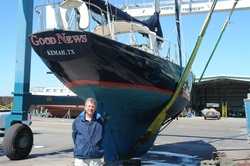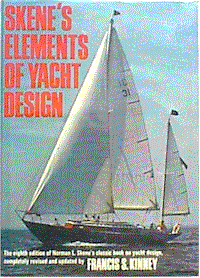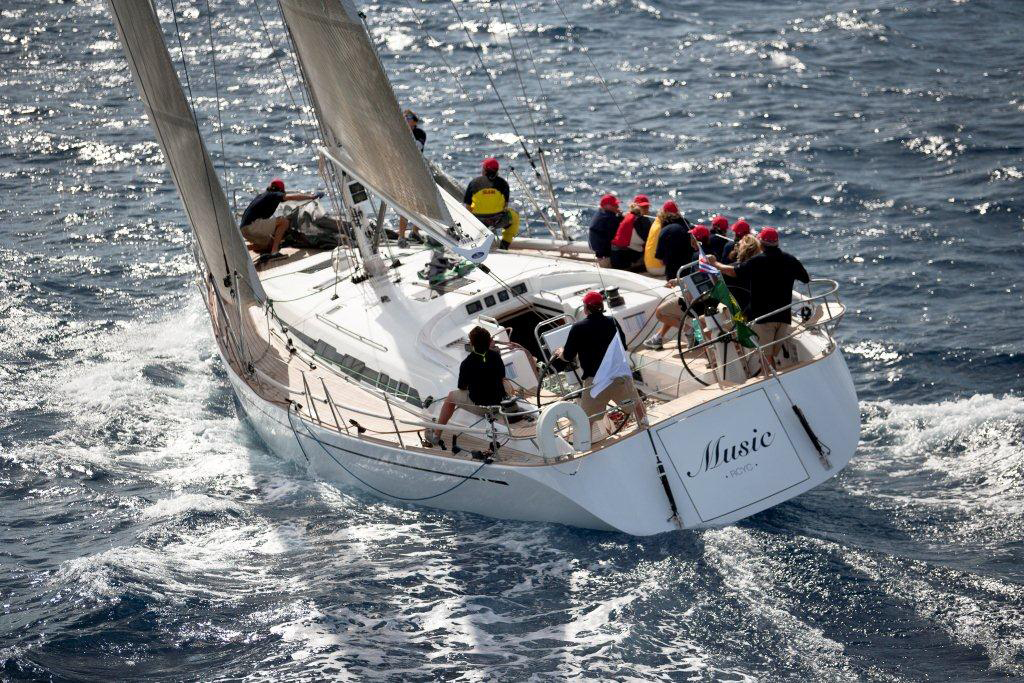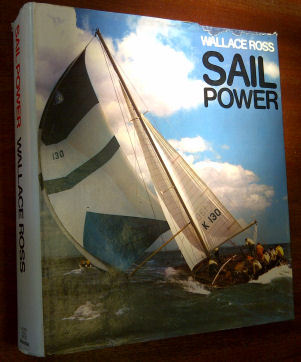 |
| I'll be heading to the Compass Store. |
Navigation only seems like a dark art from the land. From a young age, I was fortunate enough to possess a decent sense of direction, a damned handy thing for a sailor and which compensates a little for the near-sightedness, I suppose. I've come to realize over the years that my self-orientating ability, which is by no means "savant" level, has been refined through
practice and study and is clearly linked to related skills like being a good shot, and decent at darts, archery and snooker, despite little time spent on those activities.
It's less "bear 282 degrees to reach the waypoint while I remove this blindfold" and more like "I don't often get lost, can retrace my steps and know that moss is usually on the north side of the tree...in this hemisphere". Like a significant subset of mostly, but by no means exclusively, boys,
I've been fascinated by maps and geography since I was a little kid, and always had some sort of cheapo compass for turning suburban ravines into proto-Temples of Doom.
Of course, these days I fondle my Ritchie Globemaster in an unseemly fashion as much as any skipper and I like that
Vion to the right, if not to the same intensity. Nice bit of gear, if pricey.
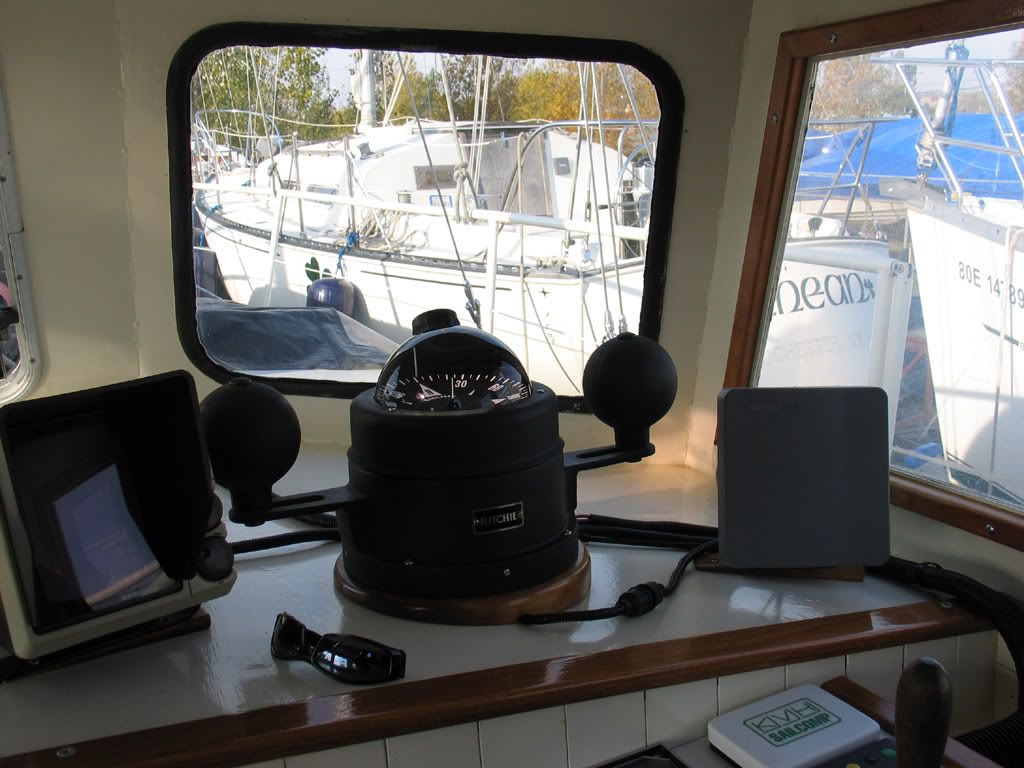 |
| Like AC/DC sang: "I've got the biggest balls of them all!" (Note: Balls are called "compensators", probably justly) |
By cartographic contrast, my late mother was so hopeless at directions that she could be seen, emerging like a narcoleptic mole
every day from the subway directly in front of the office building in which she worked...and slowly turning around until she got her bearings and "saw" her destination. She, who had been ruler-slapped by embittered, demon-haunted nuns right out of her inherent left-handedness, could never again figure out her directions. Or a map. Or some stairwells. It wasn't a crippling handicap, but it kept her from driving, as "MERGE LEFT" with such a perceptual hurdle could be the last act of a short career on the road.
 |
| Navigation problem or certain death? |
Quite a few people are like that inherently, including many men, some of whom feel embarrassment at not having Captain Cook-levels of positional awareness. For some of those people, even years of map study will only raise them from "hopeless" to "feeble". It's like handedness...it is very difficult to alter and attempting improvement probably screws up the brain.
 |
| I have really tried to think of how this could be no one's fault, but I can't, like the ship, arrive there |
Unfortunately, while GPS, iThings, AIS, RADAR, plotters and contact lens 3DNet displays (oops, that last one is not here quite yet) provide information to the unintuitive navigator, but not necessarily context. Context, which includes looking out the window now and then, makes information/data points meaningful in a holistic sense, and seeing that big picture, even on a dark night short on photons, is critical to getting one's bearings.
People used to run aground on rocks. They frequently knew the rocks were there, they frequently knew, more-or-less, the chart co-ordinates of said sharp, point death minerals...but they couldn't do anything about it. The hawser snapped, the jib carried away, the boat wouldn't point, the current...argh! Cold, salty death in the form of gull breakfast, all charted very well indeed because lives depended upon staying away from the land almost all of the time. Keeping one's offing, or giving a wide berth to land, rocks and land with rocks, was considered prudent seamanship until quite recently. Sailing to a waypoint that wasn't a Nerf buoy? Utter folly.
Today, recreational sailors and even
professionally crewed naval vessels can catastrophically run aground with comparative, even comical, ease. "The chart was wrong" is no real excuse, and yet old charts that do not feature last year's one-mile mole extension have been the basis for autopilot plots requiring extensive buffing out, at the very minimum, all the way up to
Costa Concordia/USN
Guardian levels of reef and habitat destruction and expense.
Are we ceding too much authority to our gadgets? Or is access to (assumed) accurate co-ordinates glossing over a lack of ability to interpret the information the gadget is supplying? Perhaps a corrolary might be "driver's lessons": When I was but a lad, driving lessons were for immigrants who'd never owned a car, people from places where cars were driven on the other side of the road, and people without dads or with dads with no gift for teaching. Mostly, dads taught you how to drive. In the intervening years, we've seen the professionalization of driving instruction, particularly aimed to
first-time/young drivers. Partially, this may be a reaction to the increasing density of road traffic and the increasing density of data and external distractions. Another part may be that Dad isn't perhaps the Schmacher he fancies himself to be, and passing on his bad habits is not going to raise the collective skill set on the road. Irrespective of the reasons, the notably unsentimental insurance industry favours professionally trained new drivers with insurance discounts.
So there must be
something to it.
Imagine something similar with boat operator courses, or navigation courses. The
PCOC is an utter joke, unless your boating life consists of recognizing a fairway buoy and making a figure-8 in an inflatable (Oh, wait, that's the
Toronto Harbour Licence, another useless cash grab).
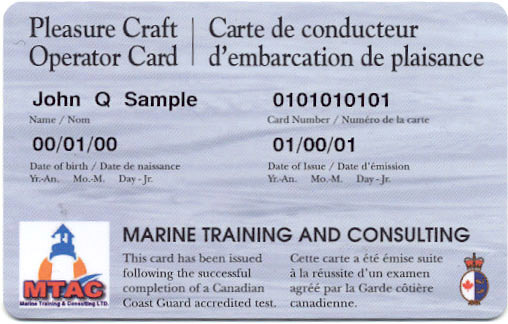 |
| A joke that's not particularly funny. |
Along with current voyagers Ken and Lynn aboard
Silverheels III, I got this discreditable creditation in 1999. We three in fact met at a Canadian Power Squadron 12-week "Boating Course", which was a fairly intensive, holistic view of Most Things Boating. At the end, we got our cards, and were among the first to do so, but more importantly, we got the knowledge to more safely operate our boats in proximity to the bottom, to the hard edge, and to each other. Compared to what some European countries demand of even novice skippers, it wasn't exhaustive by any means, but it wasn't a proctored 15 minute, multiple-choice quiz you could take at the Boat Show between wake-boarding dog showtimes.
So a modest proposal, for which I have no clue concerning implementation, might be that no GPS or plotter be sold in Canada without a basic navigation course, or perhaps that you need a REAL licence, and the course time to merit it, to drive a boat beyond a bathtub. You don't need a driver's licence to buy a car in Canada, just to drive it, so this wouldn't apply to some people retired from the helm, I suppose.
I realize my proposal goes against the
libertarian impulse so prevalent in North America, an impulse with which I would have more sympathy if it wasn't dominated by
Ayn Rand-loving selfish pricks. But I don't see licensing requirements for boat operation as an impingement on personal freedom, which of course implies the taking of personal responsibility to learn how to take one's bearings...and how to look out over the water to see if there's an obstacle your plotter doesn't know about.
That said, there are many
old-school navigational tricks to try to up one's game of Buffing Reduction. On both our boats, I use a hand-held
bearing compass (Davis, I think) from the cockpit. As I can reliably
stand in the same spot (at the end of the tiller or at the outside helm
on the steel boat), I can take "good enough" bearings (within 5 degrees)
to shore features/day marks. I have to have the bearing compass about
65 inches off the steel boat's steely deck to overcome its
inherent deviational effects, but the rest is the same. This sort of "eyeball navigation" is quick and dirty, and
you can work out on a chart your distance offshore, your
speed, your ETA and all sorts of interesting things. So can your GPS, but not with corroded batteries or at the bottom of the sea. In addition, I find that doing the mental and the visual work gives me a picture of "how things are". Staring at a plotter, while very useful in many ways, gives me a
representation of how things are. A fine distinction, perhaps, but I enjoy the brainwork of sailing as much as the line-hauling, parrot maintenance and grog-swilling.
 |
| Talk about non-standard navigation. |
 |
| Yes, this is what I read for fun. |
Speaking of brainwork, or rather
how brains work, there is
some compelling evidence that using one's hands, plus some eyeballing, plus a bit of math and muttering, integrates both hemispheres of the brain, resulting in a learning experience that is qualitatively better than just looking at a plotter's videogame-like representation of the world. Delving into the why and where of how brains acquire and use the senses to sort the world (and in the process to effectively create it) would require a very different blog that dealt with my near-lifelong, and cumulative, interest in neurology and
how the physical structure of the brain has built human culture. Let's just say learning about how we learn and why this matters can, in the long term, make a better case for using navigational techniques both old and new than can any number of comical groundings caused by a child-like faith in chart plotters, a faith that may move mountains, but doesn't budge reefs and beaches one millimetre.
There's very little neurology involved, but I hope some usefulness to sailors, in my fair-weather navigation trick of placing bits of coloured tape
along the toe rail or lifelines/pipes at points 45 degrees, 60 degrees and 90 degrees to the helmsman's
eye, relative to the centerline of the boat (and on both port and
starboard sides). While on a straight compass course, preferably perpedicular to the shore, simply line up the shore feature at 45 degrees and note the time. At
90 degrees or "abaft", you note the time. Throw in the actual degree
readings for comparisons and you can figure
distance off.
 |
| As this is more fun to read on a nice day in the cockpit, get the waterproof cover version |
Five minutes of light math (which I well realize many people are no longer taught) and a paper chart (still made) later, you can determine
your average speed and/or distance off. It's
basic pilotage, but I find I
can dispense with the bearing compass entirely and just use the watch
and get pretty impressive accuracy "by eye" using this method of
pre-chosen angles. Of course,
you can take this sort of thing as far as you care to, but be warned, it can lead to hard-core sextant abuse.
Of course, you could use a GPS, could follow a
depth contour or even
flip a sextant on its side (far better than a bearing compass...), but where's the fun in that? (Note: there is in fact some fun in that.) Making basic navigation calls in the absence of electronics is part of seamanship, in my view, and if we had more of it, we'd have fewer avoidable accidents.

